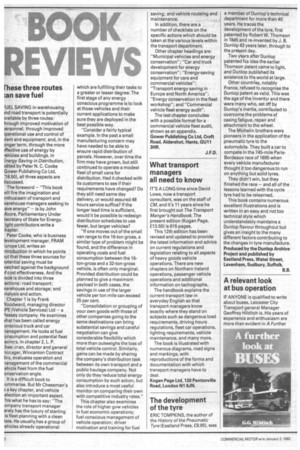The development of the tyre
Page 12

If you've noticed an error in this article please click here to report it so we can fix it.
ERIC TOMPKINS, the author of the History of the Pneumatic Tyre (Eastland Press, £9.95), was a member of Dunlop's technical department for more than 40 years. He traces the development of the tyre, first patented by Robert W. Thomson in '1845 and re-invented by J. B. Dunlop 43 years later, through to the present day.
Two years after Dunlop patented his idea the earlier Thomson patent came to light, and Dunlop published its existence to the world at large.
Other countries, notably France, refused to recognise the Dunlop patent as valid. This was the age of the inventor and there were many who, set off by Dunlop's inertia, contributed to overcome the problems of casing fatigue, repair and attachment to the wheel.
The Michelin brothers were pioneers in the application of the pneumatic tyre to the automobile. They built a car to compete in the 745-mile ParisBordeaux race of 1895 when every vehicle manufacturer thought it too dangerous to run on anything but solid tyres.
They didn't win, but they finished the race — and all of the lessons learned with the cycle tyre had to be relearned.
This book contains numerous excellent illustrations and is written in an easy and not too technical style which understandably maintains a Dunlop flavour throughout but gives an insight to the many different factors contributing to the changes in tyre manufacture. Produced by the Dunlop Archive Project and published by Eastland Press, Water Street, Lavenham, Sudbury, Suffolk.
B.B.














































